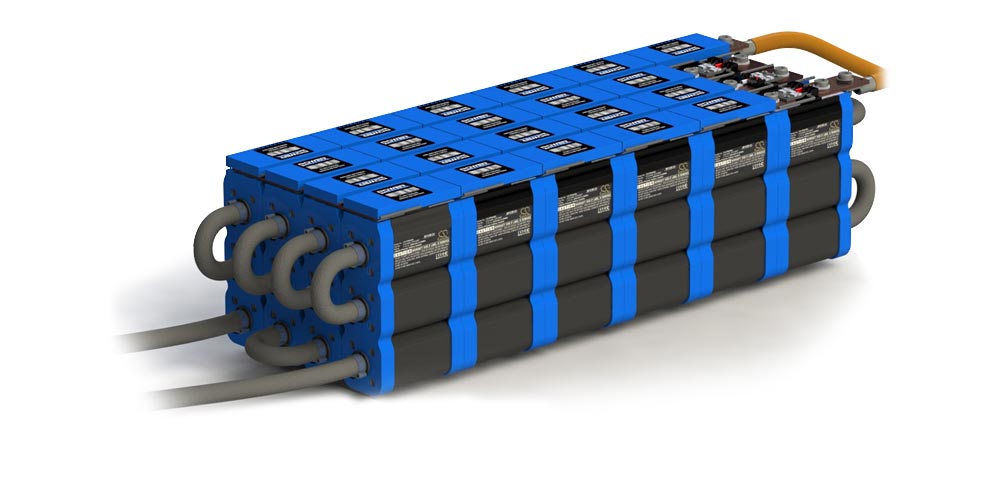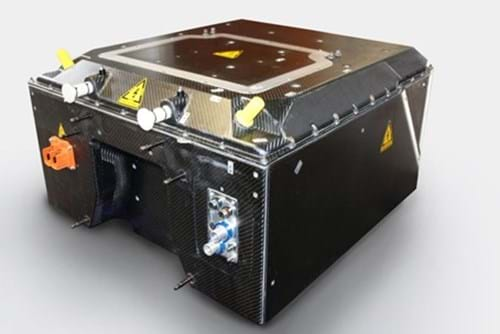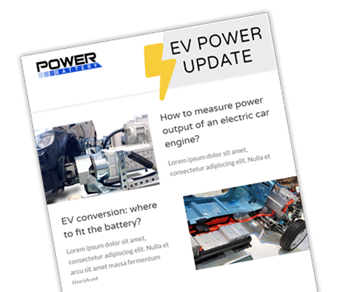How to assemble a high-power battery pack when space is limited
Assembling a battery pack for electric vehicles can be quite a puzzle. Often high power is demanded whilst space is limited. Think of motorcycles, race cars, jet skis for example. In this article we will describe the best ways to assemble a battery pack that would suit these kind of applications.
Select the right battery for your electric vehicle
First a battery is required with a high continuous and peak discharge current. When looking at the Power Battery modules, the extreme module is purpose-build for these kind of applications. It can deliver a maximum power output whilst having a compact design.
When it comes to batteries, high power and high capacity are opposites of each other. When choosing a high-power battery, this automatically results in a battery with a lower capacity and vice-versa. Often a high-power application with a compact battery pack will have a relatively low capacity.
When the nominal and maximum voltage of the application is known, the battery modules can be assembled in series to reach the required voltage. This will be the minimum space that you will need for your high-power battery pack. If there is the possibility and space to be able to connect two modules in parallel instead of one, thus making the battery pack twice as large, the capacity and power output can be doubled. With connecting extra modules parallel to the first string, the range will increase, and the voltage drop will decrease. With the extra modules, the current will be divided across the modules connected parallel to each other therefore there will be more power available for the drivetrain. Since the current gets divided, each battery will have an easier life thus increasing the usable range, power and life span of the batteries.
If it is a possibility of adding extra modules in parallel, other modules can be suitable for the application as well. One can choose another module with a higher capacity for the battery pack. The power output of the modules will be lower, but the power gets divided by the number of modules in parallel. A higher capacity module could fit the application as well.
As mentioned above, the voltage drop will also decrease. The voltage drop of batteries is the amount of volt that a battery drops when high current is demanded. The higher the voltage drop, the lower the usable capacity of the battery pack will be. Connecting one or more batteries in parallel will increase the usable capacity.
Cooling of the EV battery pack
Cooling is very important for high-power applications. In applications like classic cars and other low to medium power vehicles, cooling is not that big of a problem. In most situations the maximum power demanded from the battery pack is not that large that the cooling system will be critical.
However, in high-power applications multiple times maximum power is demanded during the life span of the battery pack. To be able to use the battery pack to its fullest, a sufficient cooling system is needed. The longer you can keep the batteries within their operating temperature, the higher the usable capacity will be.
Therefore, owners of the high-power application will need to spend a lot of time researching the possibilities to keep the cooling fluid as low as possible for the longest time as possible. The best ways to keep your battery pack cool are mentioned in another blog we wrote.

Fluid cooled batterypack
Battery housing for electric vehicles
In most high-power applications adding weight is an issue. For example in race cars everything needs to be as light as possible to achieve the highest power to weight ratio. The design of the housing of a battery pack can save weight if designed properly.
The easiest way is to fabricate it out of steel or stainless steel. Both of them can be welded and the thickness of the material can be very low (1,5-2mm) whilst still maintaining strength. Downside of these materials is that they are very heavy.
The next best material is aluminum which is very light and strong, but the thickness of the material needs to be increased. There are battery packs used in racing where the thickness of the aluminum housing is 4mm. If you add some flanges to the housing, it will get stronger. Aluminum is also weldable.
In the first Formula E cars, they used an aluminum housing fortified with carbon. The aluminum is used for the impact strength and the carbon is used for the stiffness of the material. Together they form a very good housing of the battery pack.

Formula E Gen 1 battery pack, Designed by Williams Advanced Engineering
The housing of the battery pack needs to make sure no air and fluid from outside the battery pack gets in. The air from outside can hold some moisture in it. If this moisture enters the battery pack, it can condensate and turn into a puddle of water inside the battery pack. This can cause a short circuit. Because it is very hard to make a battery pack completely water- and air proof, a Goretex plug can be added. This is a ventilation plug to regulate the pressure within the battery pack. This plug lets air flow in and out from the battery pack. The plug withdraws all the moisture from the air passing through. The fluid cannot enter the battery pack.
Besides the opening for the Goretex plug, the battery pack will still need to be as waterproof as possible. One can look up different kind of ways of making something waterproof by looking at the Automotive industry. Almost everything in the engine bay needs to be completely waterproof. Different techniques like mazes, gaskets, liquid gaskets, etc. are used.
Isolation of the battery pack
Besides the material of the housing, isolation is also important in the battery pack design. A well isolated battery pack causes the battery pack to slowly rise and descend in temperature. If the temperature does not rise to quickly no condensation of air can occur. This is very good for the electric isolation.
In every battery pack there is always some air present (except when it is vacuumed). This air contains moisture which can condensate into water. By restricting the rise and descend of the temperature of the battery pack, the moisture in the air cannot condensate.
The battery pack can change in temperature because of the following reasons:
- The discharge of energy from the battery pack
- The charging of the battery pack
- The temperature of the cooling system
- The environment and temperature outside of the battery pack
The battery pack can be isolated by all sorts of material. Key is to choose a material that is a good isolator as well as a non-electrical conductor.
PVC is a very good material for isolating a battery pack. It can withstand a breakdown voltage of 40 kV/mm. This means that a layer of 1mm PVC will do for isolating the battery pack. Another good material for electrically isolating the housing is Nomex. This is a thin paper-like material that can withstand high voltage as well. This material is very hard to tear. It is ideal to paste it to the inside of the housing.
Another good material is Kapton tape. This is a material used in the aerospace to protect power circuits from the mounting plates. The properties of this material are not affected by temperature change, not even when the temperature gets close to absolute zero like in space. A downside is that this tape is easy to tear. This is perfect in environments where there is no chance of tearing the tape, otherwise the use is limited.
At Power Battery we use a variety of isolating materials to make sure the electrical circuit stays where it belongs.
Takeaways on assembling a high-power battery pack with limited space
Important things to keep in mind by assembling and engineering a high-power battery pack:
- Choose the battery module with a high continuous and peak discharge power. This will automatically result in a battery module with a relatively low capacity.
- If possible, connect an extra (or multiple) string(s) of modules parallel in the battery pack. By adding modules in parallel, the battery pack will have a higher capacity and higher power output.
- The cooling system is very important in high-power applications. The longer the batteries stay within their temperature range during operation, the better the usable capacity will be.
- Design the housing as light as possible by choosing the right materials. A hybrid solution can also be made to combine the properties of different materials to achieve the best housing.
- Thermally isolating the battery pack is important to slow down the rise and descend of the temperature of the battery pack. This will prevent condensation of air inside the battery pack.
- Electrically isolating the housing and cooling system from the power circuits is very important for the safety. Materials like Nomex, Kapton and PVC can be used.
In short, assembling a high-power battery pack with limited space can be quite a challenge. At Power Battery we develop, test and produce high-power battery packs and modules.
Please feel free to contact us if you have any questions regarding your project, or require a consultation.

